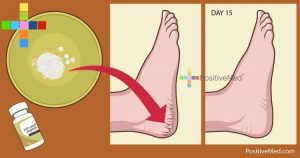
Have You Ever Wonder What Happens to the Body After Death? Here’s the Answer
[nextpage title=”…”]
Death is a natural process that everyone will eventually experience one day. After death, the body goes through a complicated biological process that ultimately results in decay. If you have ever wondered what happens to a human body after it dies, then you will be interested to discover all of the individual things that occur starting as soon as person dies. Here is everything you need to know about the decomposition process of a corpse that is not preserved with chemicals. It might seem a little gruesome, but this natural process efficiently clears away waste and benefits the environment.
Immediately After Death
In the first moments after the heart stops beating, brain activity surges as oxygen is rapidly used up. The individual neurons then slowly stop working, so the brain is not able to send the signals and hormones needed to regulate bodily functions. Since oxygen is not carried to the individual cells of the body, they die and start to decompose. Without blood circulating to maintain temperature, the corpse’s temperature will immediately start to drop at a rate of roughly 1.6 degrees Fahrenheit each hour, until it reaches room temperature. No more ATP is produced to provide energy to muscles, so they will relax quickly. About 15 minutes after death, blood starts to follow gravity to settle at the lowest points of the body. The skin at the highest parts of the body will look unnaturally pale.
The First Hours After Death
About three hours after death, the deteriorating cells will start leaking calcium. This calcium binds to the proteins in muscle cells, making them contract and stiffen up. This rigor mortis can last for up to two days after death. During all of this, the blood will continue to pool at the lowest part of the body, and maximum discoloration will be reached after 12 hours. Cells continue to break down throughout the body as putrefaction sets in. The skin will dry out and start to shrink up, and this can make it look like the nails and hair of the corpse are getting longer.
RELATED ARTICLE: TEEN TOOK JUST ONE HIT OF THIS “SPICE” AND DIED BECAUSE OF IT
[/nextpage] [nextpage title=”…”]
The Days Following Death
Cells have slowly been dying and decomposing immediately after death, but this process really kicks up speed after a few days. Cell membranes are weakened, and they start to burst. The burst cells release carbon dioxide, which breaks down the other tissues of the body. Any anaerobic bacteria in the body, which do not need oxygen to live, start eating other tissues. Since most anaerobic bacteria is in the gastrointestinal tract, the abdominal organs are the first to be putrefied. Skin begins to turn green in some sports, since organ enzymes are being digested by bacteria. This entire decay process releases a lot of chemicals, such as cadaverine, that smell extremely unpleasant.
The Next Few Weeks
These gross smells begin to attract maggots, flies, beetle larvae, and fungi. In the four weeks following death, maggots can eat over 60 percent of all the soft tissue of the body. Before all of the skin is gone, it will turn first purple and then black, because bacteria will be slowly digesting it. Hair is not consumed like the skin is, so it falls out of the scalp. In the four weeks following this, the body dries out, but it continues to decay and wear away from all the bacteria and insects eating it.
In the Following Months
At a temperature of 50 degrees Fahrenheit, all soft tissues will be decomposed and eaten within just four months. This process goes even faster in the heat, and the only that will be left is the skeleton. Bones can take up to a few years to decay entirely, but they are still an organic tissue that does decompose. Eventually, every molecule of a body will be used by plants and animals, and the environment naturally recycles a corpse.
[/nextpage]






